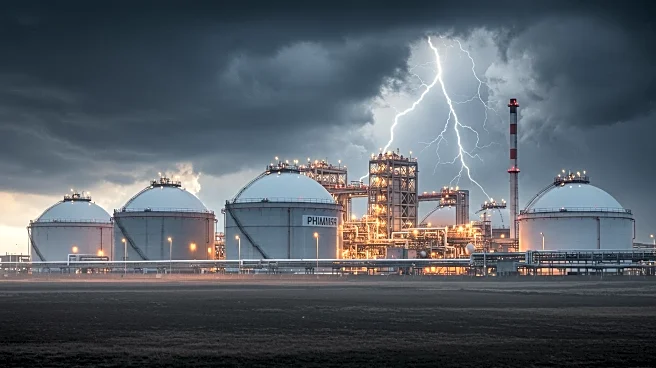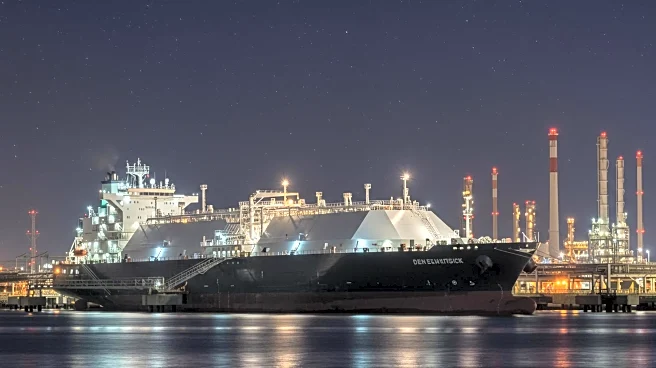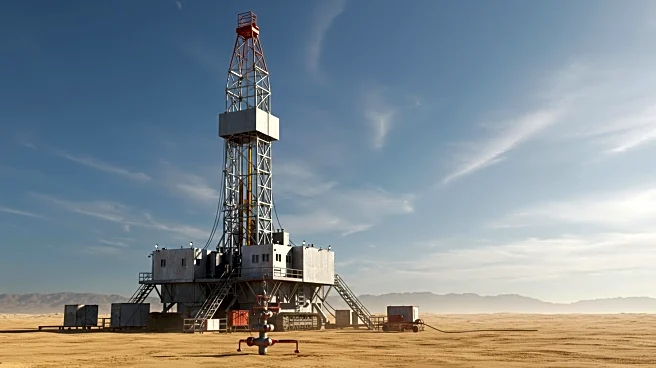What's Happening?
Argentina is pursuing an ambitious liquefied natural gas (LNG) initiative, aiming to leverage its Vaca Muerta shale resources to become a significant player in the global LNG market. The plan involves three phases, with the first phase expected to start in 2027. This phase includes the deployment of floating LNG units and the construction of pipelines. Subsequent phases involve partnerships with major energy companies like Shell and Eni, targeting completion by 2030. However, the project faces challenges, including a legal dispute with Burford Capital over the expropriation of YPF, Argentina's national oil company, which could impact the project's progress.
Why It's Important?
The success of Argentina's LNG project could significantly alter the global energy landscape, providing an alternative source of LNG to markets in Asia and Europe. This development is crucial as countries seek to diversify their energy sources amidst geopolitical tensions and fluctuating demand. However, the project's ambitious timeline and legal uncertainties pose risks to its viability. If successful, Argentina could enhance its economic standing and energy independence, but failure could deter future investments and impact its reputation in the energy sector.
What's Next?
Argentina must navigate its legal challenges with Burford Capital, which could affect the project's timeline and investor confidence. Additionally, securing shipyard capacity for the construction of new FLNG units is critical, as these vessels are essential for the project's success. The global LNG market is highly competitive, with new projects emerging in Qatar and the US Gulf Coast, which could challenge Argentina's market entry. Stakeholders will closely monitor Argentina's ability to meet its project deadlines and manage legal and logistical hurdles.
Beyond the Headlines
The development of Argentina's LNG infrastructure could have broader implications for regional energy dynamics, potentially influencing energy policies and trade relationships in South America. The project's reliance on international partnerships highlights the interconnected nature of global energy markets and the importance of geopolitical stability in facilitating such large-scale initiatives.














